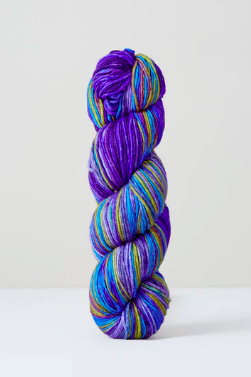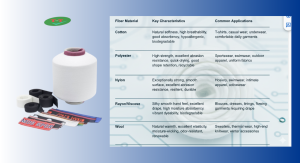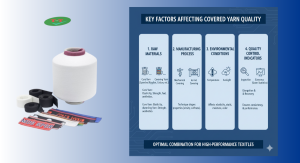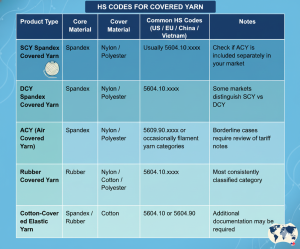Double covered yarn is a fascinating fiber that can elevate your creative projects to new heights. This unique yarn consists of two distinct layers: an inner core and an outer layer, which may be made from different materials. The double layer provides exceptional durability, texture, and versatility, making it ideal for a wide array of knitting and crochet applications. In this article, we will delve deep into the master techniques for using double covered yarn, exploring its properties, advantages, and creative possibilities.
Understanding Double Covered Yarn

To fully appreciate the beauty and functionality of double covered yarn, it’s essential to understand its composition and characteristics.
The Composition of Double Covered Yarn
The double covered yarn typically features an inner core made of a strong material, such as cotton or acrylic, while the outer layer may consist of a softer, more luxurious fiber like merino wool or silk. This combination allows for a variety of textures and finishes that can be achieved in your finished projects.
The core provides strength, allowing the yarn to withstand wear and tear, while the outer layer adds softness and aesthetic appeal. This duality means that double covered yarn can be used in a multitude of ways, accommodating both structural integrity and delicate detailing.
Advantages of Using Double Covered Yarn
One of the most significant advantages of using double covered yarn is its ability to combine the benefits of various fibers. For instance, you might enjoy the warmth of wool combined with the breathability of cotton, allowing you to create garments suitable for different climates and occasions.
Moreover, double covered yarn can enhance the visual appeal of your work, introducing complex color changes and patterns due to the way the inner and outer layers interact. Crocheters and knitters alike find these textures particularly stimulating, as they lead to beautifully intricate results that stand out in any project.
Creative Applications
Double covered yarn lends itself to various projects, from wearables to home decor items. Knitters frequently use it in sweaters, shawls, and hats, while crocheters may explore blankets, bags, and accessories.
Its versatility extends to the choice of stitches, making it suitable for both simple and complicated patterns. You can experiment with lacework, cables, or even colorwork techniques to produce visually stunning pieces that showcase the unique properties of the yarn.
Techniques for Knitting with Double Covered Yarn
Knitting with double covered yarn requires a different approach compared to traditional yarns. By mastering specific techniques, you can take full advantage of the yarn’s capabilities.
Choosing the Right Needles
When working with double covered yarn, selecting the appropriate needle size is crucial. Too small a needle can cause the fabric to be too tight and less flexible, while too large a needle might result in a loose and airy structure that lacks warmth and stability.
Opting for needles that suit the thickness of the yarn will provide the best results. Additionally, considering the material of the needles can make a difference in your knitting experience. For instance, wooden needles tend to grip the yarn better, while metal needles allow for smoother sliding and quicker stitching.
Mastering Tension Control
Tension plays a vital role when working with double covered yarn. Since it consists of two layers, it’s essential to maintain even tension throughout your project. Uneven tension can lead to puckering or distorted shapes.
To achieve consistent tension, consider practicing with swatches before starting your actual piece. This practice will help you identify how the yarn behaves and allow you to adjust your technique accordingly. Pay attention to how tightly you hold the yarn; it should flow freely without being overly restricted.
Exploring Unique Stitch Patterns
Double covered yarn opens a world of possibilities concerning stitch patterns. Its unique texture allows for inventive designs that can transform a simple project into something extraordinary.
For example, consider experimenting with ribbing or seed stitches to highlight the dual layers of the yarn. These techniques will not only enhance the overall look of your project but will also demonstrate the contrasting colors and textures inherent in double covered yarn.
Incorporating techniques like slip stitches can add depth to your project by creating visual interest and dimension. As you expand your repertoire of stitch patterns, you’ll discover how each one interacts with the yarn’s distinctive qualities, resulting in beautiful and captivating designs.
Crochet Techniques for Double Covered Yarn

Like knitting, crocheting with double covered yarn introduces unique challenges and opportunities. By understanding specific crochet techniques, you can unleash the full potential of this versatile yarn.
Selecting the Right Hook Size
Choosing the correct hook size is essential when crocheting with double covered yarn. A hook that is too large may produce a sloppy, floppy fabric, whereas a hook that is too small could make it challenging to achieve the desired drape and flexibility.
As with knitting, gauge swatching is imperative to ensure you are using the right hook size. Create several swatches with varying sizes of hooks until you find the one that creates the perfect balance between ease of use and visual appeal.
Utilizing Different Crochet Stitches
With double covered yarn, the options for stitch patterns are virtually limitless. From basic single and double crochet to more intricate techniques like bobbles or popcorn stitches, the unique characteristics of the yarn will influence the outcome of each stitch.
Experiment with combining different stitches within the same project to create texture and contrast. This approach will allow you to play with the yarn’s visual complexities, producing stunning effects that capture the eye.
Moreover, don’t hesitate to incorporate color changes or stripes to further enrich your design. The interplay of colors against the double-layered structure can lead to mesmerizing outcomes that showcase the beauty of the yarn.
Incorporating Advanced Techniques
Once you feel comfortable working with the basics, consider delving into advanced crochet techniques that can add another layer of sophistication to your projects. Techniques like overlay crochet or tapestry crochet can create striking visuals that utilize the full spectrum of colors and textures found in double covered yarn.
Additionally, consider experimenting with freeform crochet styles, where the focus is on creativity rather than following strict patterns. This method encourages you to invent your designs, taking advantage of the yarn’s unique properties to bring your artistic vision to life.
Troubleshooting Common Issues with Double Covered Yarn
As with any crafting material, using double covered yarn can come with its own set of challenges. Understanding common issues and their solutions can make your crafting experience much smoother.
Dealing with Splitting
One common issue encountered when working with double covered yarn is splitting. The nature of the yarn’s construction can sometimes lead to the outer layer separating from the core, causing frustration during both knitting and crocheting.
To minimize splitting, try using a sharper needle or hook. Additionally, being mindful of your tension can help avoid unnecessary strain on the yarn, reducing the chances of splitting. If you notice that the yarn frequently splits, it might be worth considering alternative brands or types of double covered yarn to find one that suits your style better.
Managing Yarn Barriers
Yarn barriers can occur when the two layers of the double covered yarn become twisted or tangled. This situation can slow down your progress significantly and can be a source of annoyance.
To prevent yarn barriers, take a moment to unwind the yarn properly before starting your project, ensuring that it’s free from knots and tangles. While crocheting or knitting, keep an eye on the yarn to make sure it remains untangled, and if you encounter a barrier, gently unravel it rather than forcing it apart.
Addressing Inconsistent Gauge
Maintaining consistent gauge can be especially tricky with double covered yarn due to its unique structure. Variations in tension can lead to uneven fabric and affect the overall appearance of your finished piece.
If you find yourself struggling with gauge variations, try switching up your needles or hooks to see if that helps. Additionally, focus on establishing a steady rhythm while working, as a relaxed and controlled pace can often lead to better consistency in gauge.
Conclusion
Mastering double covered yarn opens up a world of creative possibilities, allowing you to explore textures, patterns, and techniques that enhance your knitting or crocheting experience. By understanding the yarn’s composition, selecting the right tools, and learning how to troubleshoot common issues, you can unlock the full potential of this remarkable fiber.
Whether you’re creating cozy garments or intricate accessories, double covered yarn can elevate your projects to a whole new level of artistry. Embrace the journey of experimentation and creativity, and let double covered yarn inspire your next masterpiece.
Address: Thanh Hoa Hamlet, Thanh Dien Commune, Chau Thanh District, Tay Ninh Province, Vietnam
Mobile/whatsap: (+84) 984.841.239
Mail: sale@tanithread.com
Website:https://tanithread.com/



